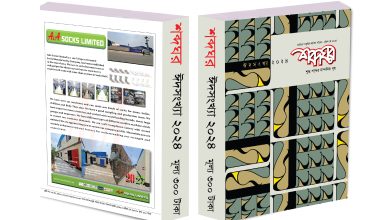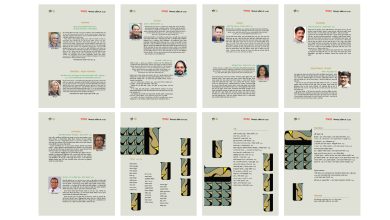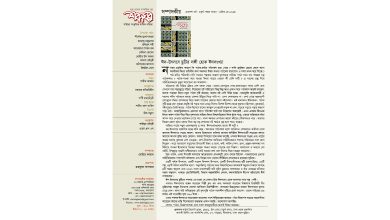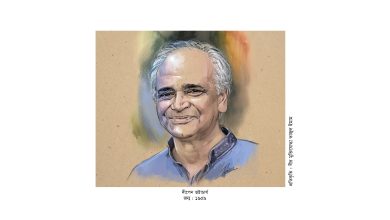Essay : Contextualizing the Partition Stories of Hasan Azizul Huq : Mofidul Hoque
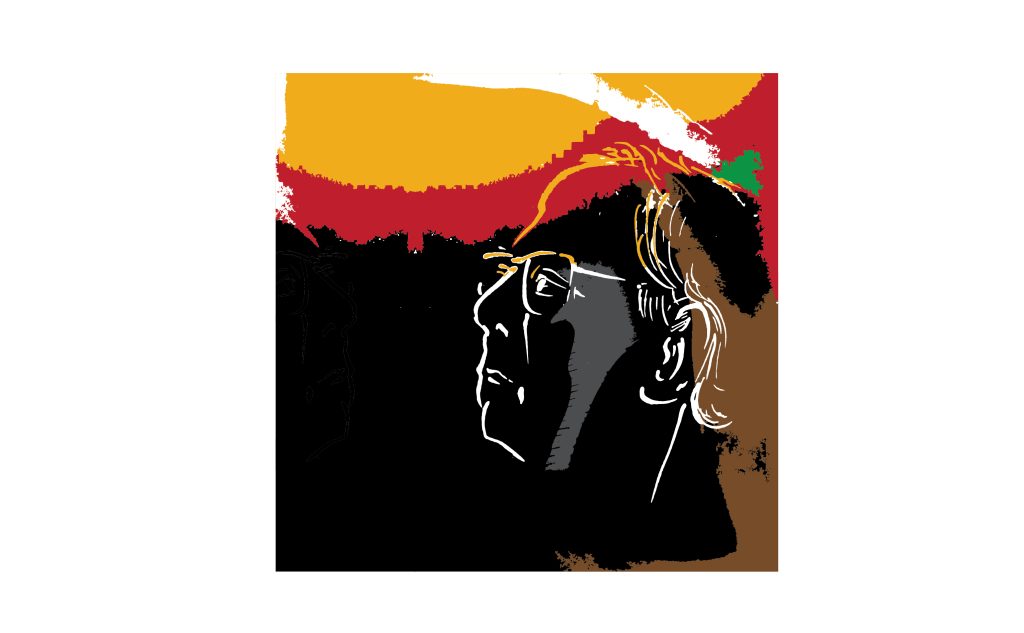
Partition literature as a distinct literary genre has found its place in the Urdu, Hindi, Bengali and English writings of the sub-continent. It is rooted in time but not bound by time. It emerged in the post-1947 era and is still thriving with new writings added in every passing year. As such partition literature has diversity and freshness which needs to be analyzed in its context both at macro and micro levels. One can also notice that partition literature in English is overwhelmingly about Punjab partition. Writings on Punjab partition in Urdu has also been translated into English. The tilt towards Punjab became the feature of literature produced immediately after the partition and still remains so.
Early phase of partition literature was mostly about Punjab because partition violence and exodus of people from one side of the border to the other during the partition days was most brutal, bloody and tragic in Punjab. On the other hand Bengal remained more or less calm in 1947. Conversely Hindu-Muslim riots were brutal in the pre-partition Bengal with river of blood being flowed in the streets of Calcutta in 1946, which history dubbed as the ‘Great Calcutta Killing’. This was followed by the shocking conflict and senseless violence deep in the rural setting of Noakhali followed by Bihar.
Whereas Bengal was more or less peaceful in the partition days of 1947, sea of blood flowed on both sides of the newly marked border of Punjab. The conflict went out of control and in a mad frenzy Hindus-Sikhs and Muslims engaged in killing each other. The political leadership who endorsed partition as a means to end the religious conflict in India was bewildered by the extent of violence partition brought in and decided to implement the policy of population exchange. Thus begun the overnight exodus of common people wiped out of their abode, their homeland, their history. This tragedy gave birth to partition literature heavily tilted to Punjab partition.
If Punjab partition can be depicted as ‘Operation without Anesthesia’, Bengal partition can be termed as a conflict with occasional waves of violence and exodus, the first of which being enacted in 1950. There was no exchange of population in Bengal and Pakistan made its final push for such brutal solution with their attack against Bengali nationalists in general and Hindus in particular in 1971 aiming to clean the land of the pure of any infidel presence.
This effort culminated in Genocide and ultimate surrender of Pakistani Forces to the Freedom Fighters ably assisted by India and the emergence of Bangladesh as a secular democratic republic upholding linguistic-ethnic identity that promotes inclusivity of all religions. But the legacy of partition is deep and solution was not easy. The whole of the subcontinent got entangled in the web of partition that crippled the mindset of generations to come and lured the politicians to continue to play with fire.
In this background artistic renderings of the past tragedy have earned significance not only for the present but also for the future. Partition literature is a way our writers attempted to fathom the extreme brutality and suffering that people went through.
Partition literature is passing through various phases. The outbursts of early chronicle were produced by those who became victims of history, witnessed and suffered extreme pain. No doubt the bulk of such literature centered around Punjab partition and brutality had its mark in literary renderings. On the other hand the agony of rootlessness and forced displacement along with nostalgia of the land left behind was salient feature of early Bengali writings on partition. Majority of partition stories were produced by the refugees from East Bengal, whereas Bengalis from Eastern India immigrating to the Islamic land of Pakistan could not freely express themselves as that was not a politically correct position defined by the state. So in the initial phase partition literature in both part of Pakistan was not as prolific as we find in India. Trauma of partition experience also played a role which has never been analysed in detail.
Re-reading the partition stories of Hasan Azizul Huq one can note the complexities that remain as backdrop of such literary endeavours. Hasan was born in a remote village of Burdwan, far from the turmoil and conflict which engulfed the urban Bengal. When Bengal was partitioned people in the rural setting could not understand what really happened. But there was no escape from the legacy of partition and at the age of sixteen Hasan had to leave the family and life at Burdwan to come to Khulna to start a new life in a new land. The 1950 riot and mass exodus of Hindus from East Pakistan has changed the demography of West Bengal in general and Kolkata in particular. The riot that Bengal evaded in 1947 now raised its cruel head with brutal scenes enacted in many places of Bengal.
The refugee boy Hasan Azizul Haq emerged as a story teller with a difference in the Sixties of last century. One of his early story ‘Uttor Bashante’, (‘Post-Spring’) narrates the life of a migrant family that settled at an abandoned dilapidated house at Khulna suburb. Life has lost meaning both for the young and old members of the family. Following the ‘Post- Spring’ story Hasan has not written much about partition, altogether six stories can be compiled including ‘Atmaja O Ekti Karabi Gach’, a masterpiece hailed as one of finest short stories of the Bengali literature. ‘Atmaja’ is also the story of deep pain of a refugee family whose members could not find way to build a new life. The story has been told in such undertone that many readers consider it as a story of human suffering, not so much related with partition.
The pain and agony of partition remain as under current theme in almost all the six stories of Hasan on partition. The stories as such does not reflect any personal experience but Hasan like many others of his generation has witnessed mad frenzy that is difficult to fathom.
The partition stories of Hasan do not betray his own past although the setting is almost always the refugees in their new environment. There they are like fish out of water, gasping for breath and in many cases the shelter is not anything new but a house as abandoned as the people are. The present haunts them, the past does not exist for them and the future has no meaning. Such is the pain of partition that Hasan tried to depict which became a tale of human suffering difficult to fathom.
Hasan Azizul Huq in his writings in the newly independent Bangladesh went back to his past, to the people and life of rural peasants in the Bengal of scorched earth, the ‘Radr’ with its unique eternal Bengalines. These are experiences author brought with him when he crossed to border to turn into a refugee from a citizen. But his deep personal experiences are not to be found in the stories. That was too traumatic, too deep to be shared with others.
I have the opportunity to listen to his first personal narrative of partition in February, 1999 at a seminar organized by the Comparative Literature Department of Jadavpur University. The theme of the three-day conference was Identity of Bengali Nationhood.
We were staying in the same hostel, delegates from Bangladesh including Hayat Mamud, Waheedul Haq, Mohammed Rafique, Sanjida Khatun and others. During the adda at night Hasan Azizul Huq withdrew himself as he was yet to finish his paper. Everybody was there with their paper ready except HAH. Next day when he read out the paper at the morning session the audience was spellbound. The title of his paper was “Ordinary Life: Communalism Partition Riot”. The ordinary person was he himself and other common men and women from the village under Mangolkot Police Station in Burdwan. It was the first time Hasan opened up with his childhood and early life experiences. In the background lot of events happened that made its impact on the life of rural Bengal. When India got independence Hasan, a boy of class IV came to know at school that from today India is free. A new flag was hosted with rendition of patriotic songs. Except that small ceremony life continued as usual. He narrated little events of his life which reflected divide as well as bondage in the rural reality, sometime both attitude being held by the same person. Most importantly he came up with one killing in the village as a consequence of 1946 riot that still haunts him. Their own village of predominantly Muslim population was like an island surrounded by Hindu villages. The fatty men, popularly known as ‘Jamai’ of the village because of marital link was a newcomer. He along with his brother-in-law was searching for a girl in the family who went missing. In the moonlit night they were suddenly attacked by a group of Hindus addicted with drug. The brother-in-law escaped in no time but the fatty Jamai could not. The escapee later on narrated the event, the Jamai was stabbed and he was screaming loudly, why me? What have I done? Why are you killing me?
This is only one killing, Hasan did not witnessed that but learned the story in detail from the eye-witness. This one killing represented to him all killings that preceded it and continued thereafter.
It took almost 50 years for Hasan to open up with his traumatic experience of partition.
Later he picked up the pen to write his own memoir. Multi-volume of the memoir has already been published. We know in great detail stories of his life in the backdrop of communalism partition and riots.
In spite of great details provided by the author the question remains – do we really understand the partition and its stories or when will we ever be able to understand?
Mofidul Hoque : Researcher, Publisher and Essayist
Illustration : Rajat

